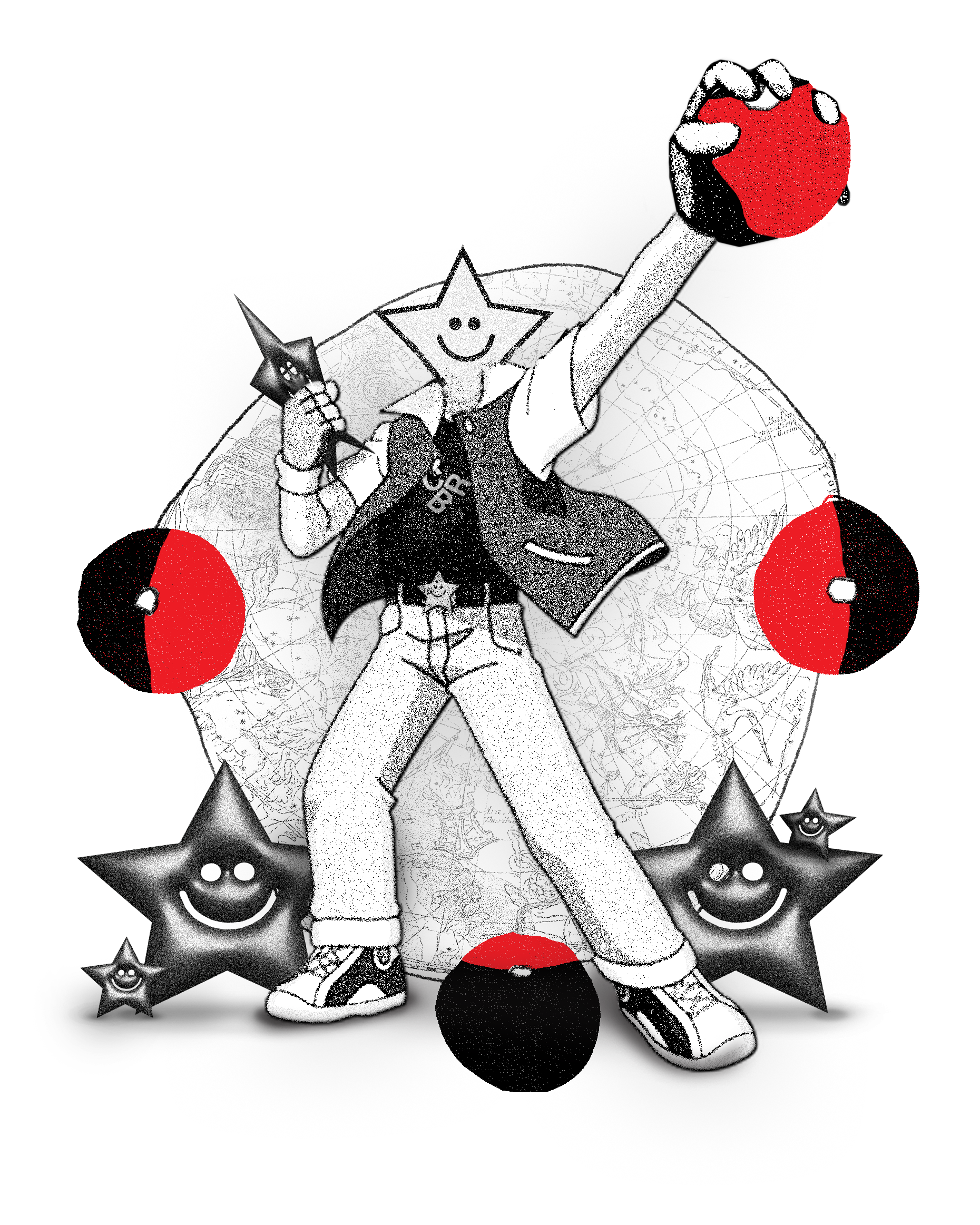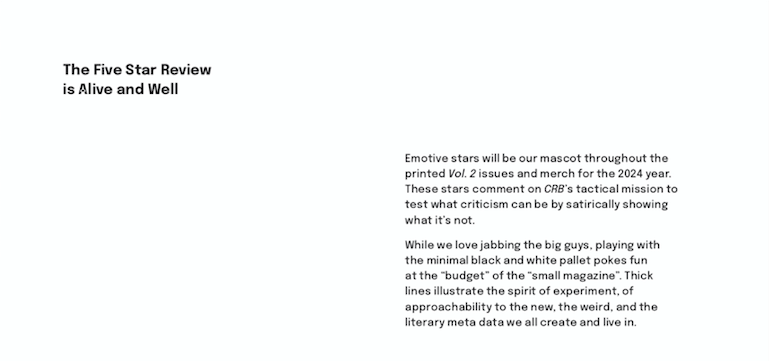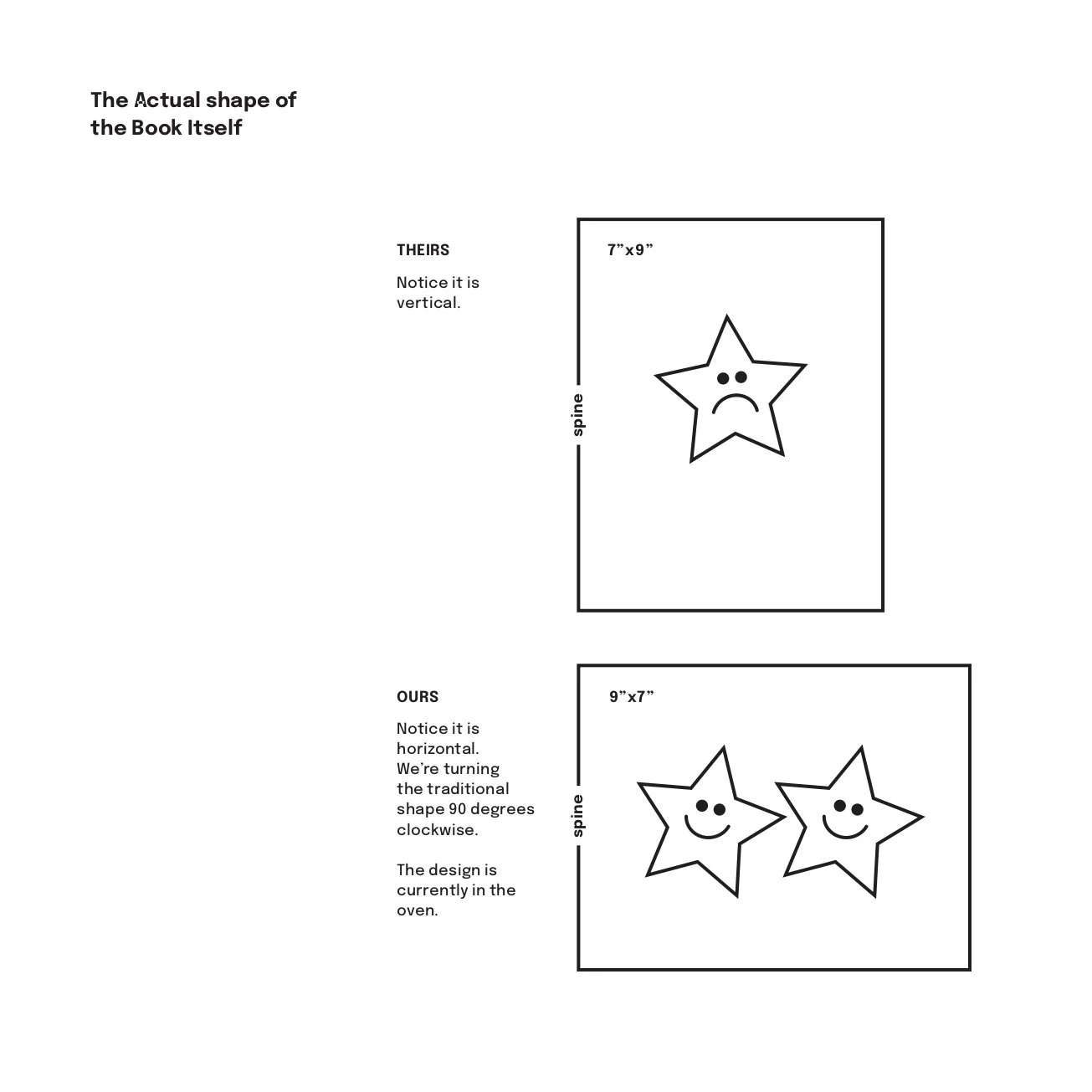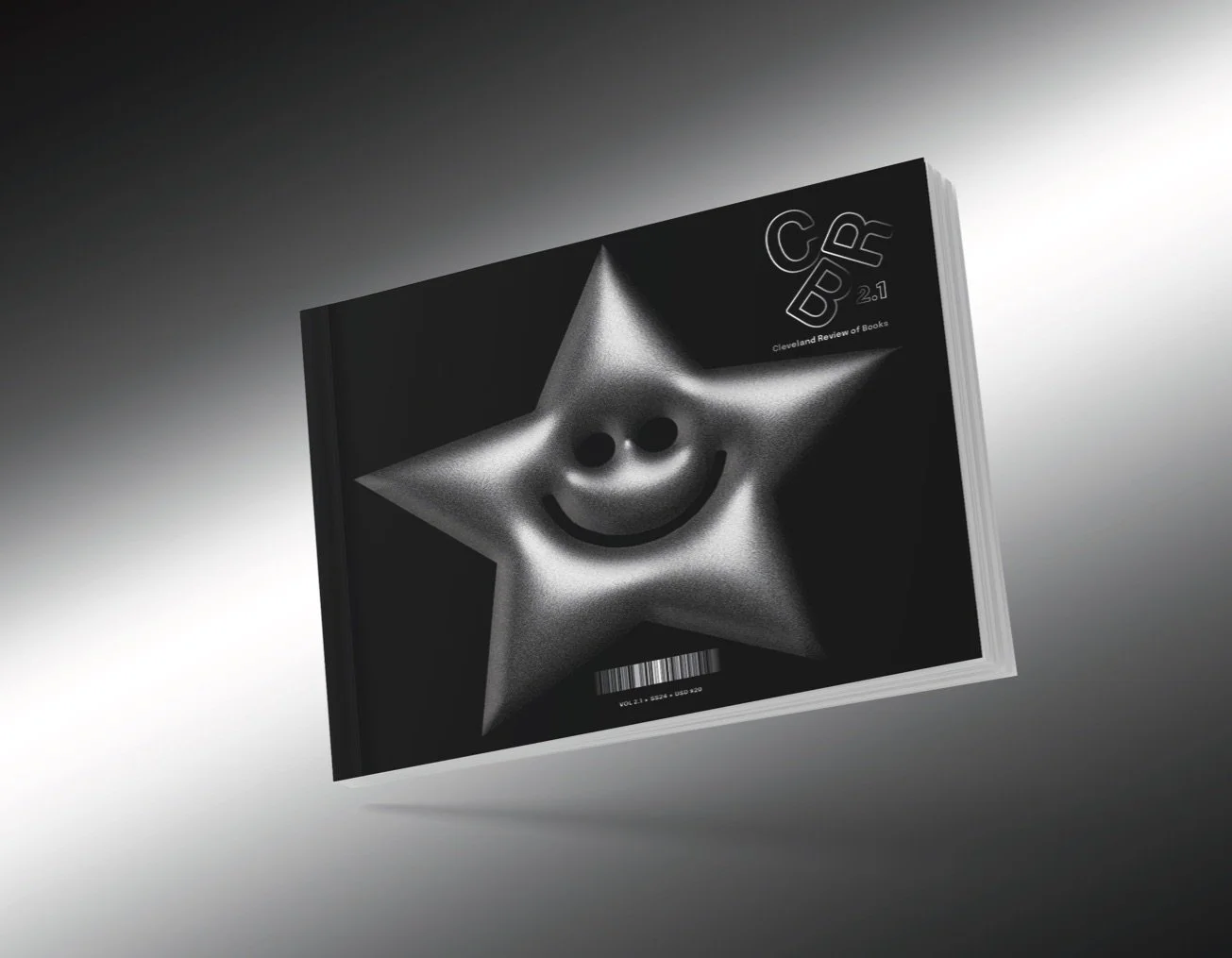Spring In Review: 18 False Types
I’m tired of people decrying the supposed death of the avant-garde, lamenting the end of “writing” as we know it, screaming helplessly about the horrors of A.I., scoffing at the unsustainability of literary production business logic, people and outlets who have made a name for themselves and then pulled up the ladder from behind them, the imagined lack of criticism and stultification of book reviewing as a practice, anger about not enough books being reviewed, and a general sense that our culture has lost and continues to lose something essential as a result of all of this. I implore you to subscribe to our humble journal. CRB has been here for a bit and will be here for a long, long while. If you want to be a part of the future we’re making, one where criticism is more than a high-brow pastime for the Anointed intellectuals within prestigious institutions and located in cultural metropolises, one that includes the overlooked and flownover while still treating their work with the same rigor, care, and no-holds-barred attitude we treat books from Big-Whatever-the-Fuck-Number-it-is-Now publishing houses, then subscribe and sail the politics/ideas/culture/criticism seas with us, now and into the future. The more the merrier.
In other news, it’s been a lovely last three months at the Cleveland Review of Books. We’ve been hard at work on our third print issue, Vol. 2.1, our first issue in calendar year 2024’s “Volume 2.” Under the stewardship of our Art (Our(t)) Director Angelo Maneage and Editor-in-Chief Zach Peckham, we’ve decided to opt for an issues-within-a-volume style print publishing schedule, where each issue in the volume shares stylistic and formal elements that comprise that year and volume’s feel, both internal to the issues and as expressed in art on the website and in our merchandising.
Two major motifs this year are stars:
and print issues that flip traditional lit mag dimensions on their head, literally:
Here’s what it actually looks like:
Our next two issues, 2.1 and 2.2, would be pretty mediocre to bad on the traditional 4 or 5 star review scale, but on our scale they’re aces.
•
Besides print issue planning, we also made an appearance in Washington D.C. at the invitation of the Washington Review of Books. Margarita Diaz read from her piece on Clarice Lispector on D.C., and Mansfield’s own Nick Rees Gardner from his forthcoming book from Madrona Books, Delinquents and Other Escape Attempts; we started publishing fiction and poetry online on a monthly basis; we published a seven-part series of essays curated and introduced by Zach Savich called “Awe Studies” in support of this year’s Awe-themed Cleveland Humanities Festival; we’ve renewed grants, sent pitch acceptances, spent countless interstitial moments fine-tuning pieces, been interviewed for someone’s substack (we were confounded to be asked a question about “our brand”), refined our vision, defined and redefined and undefined and defined again our principles, enjoyed a brief Cavs playoff run, laughed, cried, and, in a Heideggerian sense, “were”, or, more specifically, “were in the process of becoming,” or in a Hegelian sense, becoming what the past already had in store for us as we march into an unknown to us but already-written-in-the stars future. Speaking of editing, Zach and Bri, anything I missed here?
Zach: …
Bri: I like it when people take apart a book and show me how it works.
Which reminds me to remind you that we do indeed accept pitches to do collaborative criticism.
•
If you know me, you know that I’ve spent much of the last year replaying old Pokemon games. It started out with Pokemon Yellow, where you are gifted a Pikachu at the beginning of the game. From there, you travel from gym to gym testing your strength. Every Gen 1 Pokemon player will recall the difficulty of the first gym, where both monsters thrown at you by the Gym Leader Brock are dual Rock/Ground types, making them fully resistant to electric type attacks, prompting you to resort to the dominant meta of catching a Nidoran (male or female) and leveling them up to learn the fighting type move Double Kick, which dispatches Brock’s mons with ease. You go on to add the three Gen 1 starter pokemon to your team, the fire lizard Charmander, the water type turtle Squirtle, and the grass/eventual dual poison type Bulbasaur.
I’m not going to give you a rundown of my teams and journeys in Yellow, Crystal, Emerald, and White (Generations 1, 2, 3, and 5, respectively), but I’ll stick with my overarching point and its relation to CRB. There are eighteen different types of Pokemon (Normal, Grass, Water, Fire, Rock, Ground, Poison, Ghost, Psychic, Dark, Steel, Ice, Fighting, Electric, Bug, Dragon, Fairy, and Flying). Each type has other types they are effective against, and types that they are weak against. When you’re going through a playthrough, you generally want to have a nice balance between types so that for any given battle, you have at least one Pokemon that can rout the opposition through favorable typing. Going against a Grass specialist, for instance, it’s useful to have a Fire, Flying, Poison, or Bug Type Pokemon in your lineup, while you would be screwed if your team was primarily comprised of Water and Ground type Pokemon. But if you had a team of just, say, Fire types, that would work wonderfully in a matchup with a Grass type trainer, but you’d be in serious trouble if right after you had to battle a Water or Ground specialist. I guess what I’m trying to say is that there is immense pleasure in constructing a diverse cast of Pokemon that will thrive in just about any setting, which can only be done by having a diverse team with optimal type coverage.
Metaphorically speaking, I feel like we do something similar at CRB, our publishing mirroring the process of building a Pokemon team with optimal type coverage. Our editors have their specialties, and the results (and battles) are delightful.
There are eighteen types of Pokemon, as I’ve already said. We’ve published sixteen “reviews”, sixteen standalone “essays”, two clusters of poems, one short story, two interviews, seven excerpts, and seven Subscriber Zone™ pieces (fifty-one in total) since editor Philip Harris wrote our last Quarter in Review on March 19th, 2024. I thought it would be a fun exercise, as a means of assessing this activity over these last few months, to assign Pokemon types to each piece we published. Here goes.
Margarita Diaz’s “Washington, May 1956: On Clarice Lispector’s The Apple in the Dark by Clarice Lispector” - Grass/Dark
Excerpt from Carolyn Ferrucci’s Say in the End - Rock
Matt Seybold’s “Gulp Fiction, or Into The Missouri-verse: On Percival Everett's James” - Water
Monique Laban’s “Your Children Will Turn into Doves and Fly Away: On Stardew Valley” - Grass/Flying
Emma Heath’s “Grief’s Many Voices: On Blake Butler’s Molly” - Ghost
Excerpt from Quartez Harris’ We Made it to School Alive - Bug/Ground
Christian Wessels’ “‘To Remembrance When a Mercy’: On Fady Joudah” - Ground/Dark
Zach Savich’s “Awe Studies: An Introduction” - Fairy
Bekah Waalkes’ “Third Place Husbands: On Rachel Ingalls’ In the Act” - Flying/Ground
Excerpt from Michael Wheaton’s Home Movies - Fighting/Rock
Eric Betts’ “The Game Becomes a Storytelling Machine: On Tears of the Kingdom” - Flying/Grass
Benjamin Anthony Rhodes’ “Awe Studies: Sound, Grief, and Imagination” - Fairy/Water
Jeff Alessandrelli’s “Art Over Numbers: On Independent Publishers and Small Press Practices” - Bug
Johannes Göransson’s “A Tourist in the Underworld: On Tomas Tranströmer” - Water/Steel
Agnes Borinsky’s “Awe Studies: LINER NOTES” - Fairy/Dark
Cobi Powell’s “Terminal Lucidity: Ways pf Seeiong and Thinking about Don DeLillo’s Late Style” - Steel/Psychic
Adrian Lu’s “A Presence Solved by Its Own Absence: On Anne Carson’s Wrong Norma” - Dragon/Normal
Sony Ton Aime’s “Awe Studies: Resisting Awe” - Fairy/Normal
Daniel Uncapher’s “Play Acts: or, How I (Actually) Survived a Zombie Attack” - Ghost
Melissa Rodman’s “Beauty in the Breakdown: On Leslie Jamison’s Splinters” - Grass/Fighting
Two Poems by Juliet Gelfman-Randazzo - Psychic
Brian Blanchfield’s “Awe Studies: From The querent” - Fairy/Fire
Olga Mikolaivna’s “Mired by Monolingualism: On The Autobiography of Language” - Psychic
Excerpt from Brandan Griffin’s Four Concretures - Rock
Annaka Saari’s “Bad Boys and Birdsong: Heroes of Detroit” - Steel/Flying
Rachel Ferber’s “Awe Studies: truck floating chips in the sky” - Fairy/Flying
Cora Lewis’ story “Artificial Intelligence” - Steel/Electric
Isaiah Back-Gaal’s “Reading Wo Chan in Ohio: On Togetherness” - Fairy/Poison
Excerpt from Patty Nash’s Walden Pond - Water/Grass
Jackson Frons’ “Last Acts: An Interview with Alex Sammartino” - Fighting
Jess Richardson’s “Awe Studies: We Look to Be Undone, or At Least Entered” - Fairy/Dragon
Nathan Motulsky’s “Ethics of ‘Serious Culture’: On Greg Jackson’s The Dimensions of a Cave” - Ground/Psychic
Excerpt from Nick Rees Gardner’s Delinquents - Ground/Poison
Martin Dolan’s “Not My First Review: On Honor Levy’s My First Book” - Psychic/Fairy
Sam Venis’ Interview “Love as Solicitude: On Geoffrey Mak’s Mean Boys” - Dark/Fairy
Kenneth Dillon’s “Dickens is Dead, Long Live Dickens: Influence and Imitation in Referential Fiction” - Dragon
Andres Vaamonde’s “Going Wild: On Kathryn Bromwich’s At the Edge of the Woods and Nan Shepherd’s The Living Mountain” - Grass/Rock
Kassia Oset’s “‘Just the Beginning’: Cleveland Police Violence, Surveillance, and The Trial of Fred Evans” - Fire
Robert Baskin’s “Emptying the Pond to Get the Fish: On Robert Bresson” - Electric
Dani Lamorte’s “‘Paris! Appalachia!’ (or How to Live Where You Are)” - Ground/Steel
Six Poems by Cody-Rose Clevidence - Bug
Adam Fales’ “Make It News: On Chris Marker’s Eternal Current Events” - Ice
An Excerpt from Carolina Ebeid and Samiya Bashir’s A Mouth Holds Many Things - Water
Rhian Sasseen’s “Eating Time: On Marosia Castaldi’s The Hunger of Women” - Normal/Psychic
And the SUBSCRIBER ZONE™ Content (access by subscribing, today, right now, do it):
Jack Christian’s “Camp Dada” - Ground
Alyssa Perry’s poem In order to be here - Dragon
Christine Hume’s “In the Gutter: Image-Texts and Feminist Photopoetics” - Electric
Shane McCrae’s poem The Mockingbird Sings Who - Flying
A.V. Marraccini’s “A Cut-Crease for Richard Serra” - Psychic
Jack Hanson’s “In Defense of Cliché: On Brian Dillon” - Normal
Jon Conley’s story “Bunnies” - Dark
As you’ll notice, like most Pokemon, our pieces have dual typing, meaning that they can’t be pinned down in one single category. For instance, a fire-breathing bird would most likely have both flying and fire typing. This grants them greater strength due to having more than one innate nature, and more vulnerabilities. While most publications might prefer to know exactly what they are publishing, chiseling down something that holds many different qualities into something absolutely knowable, graspable, and conforming to house style in an editorial process that is suffocating and debilitating, we live with the ambivalences and vulnerabilities that our published works possess, knowing that these vulnerabilities are precisely what allow them to have greater impact and possess more strength than something that is empirically solid, predictable, or something whose future effect we understand well in advance. If there is any one “house style” we have, it’s a commitment to not having one, and that commitment has led to a new type entirely: the CRB type.
We are really looking forward to the next few months, and our next Quarter in Review, which will chronicle our continued journey through our lifelong process of refining the undefined. We hope to see you at our launches in Cleveland and New York (July 20 and 10, respectively), and to get to know you on a “we know your address” kind of basis once you subscribe.




